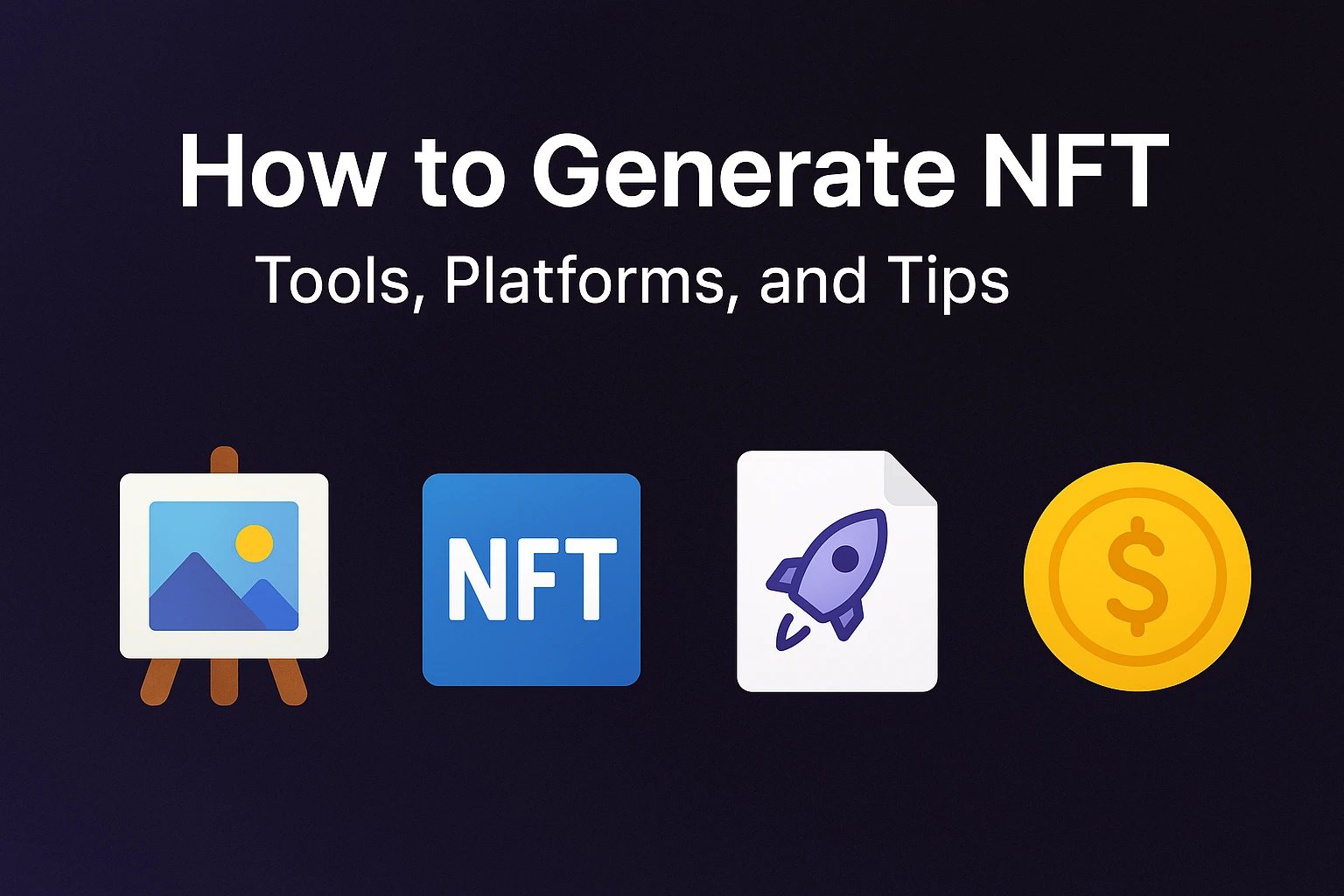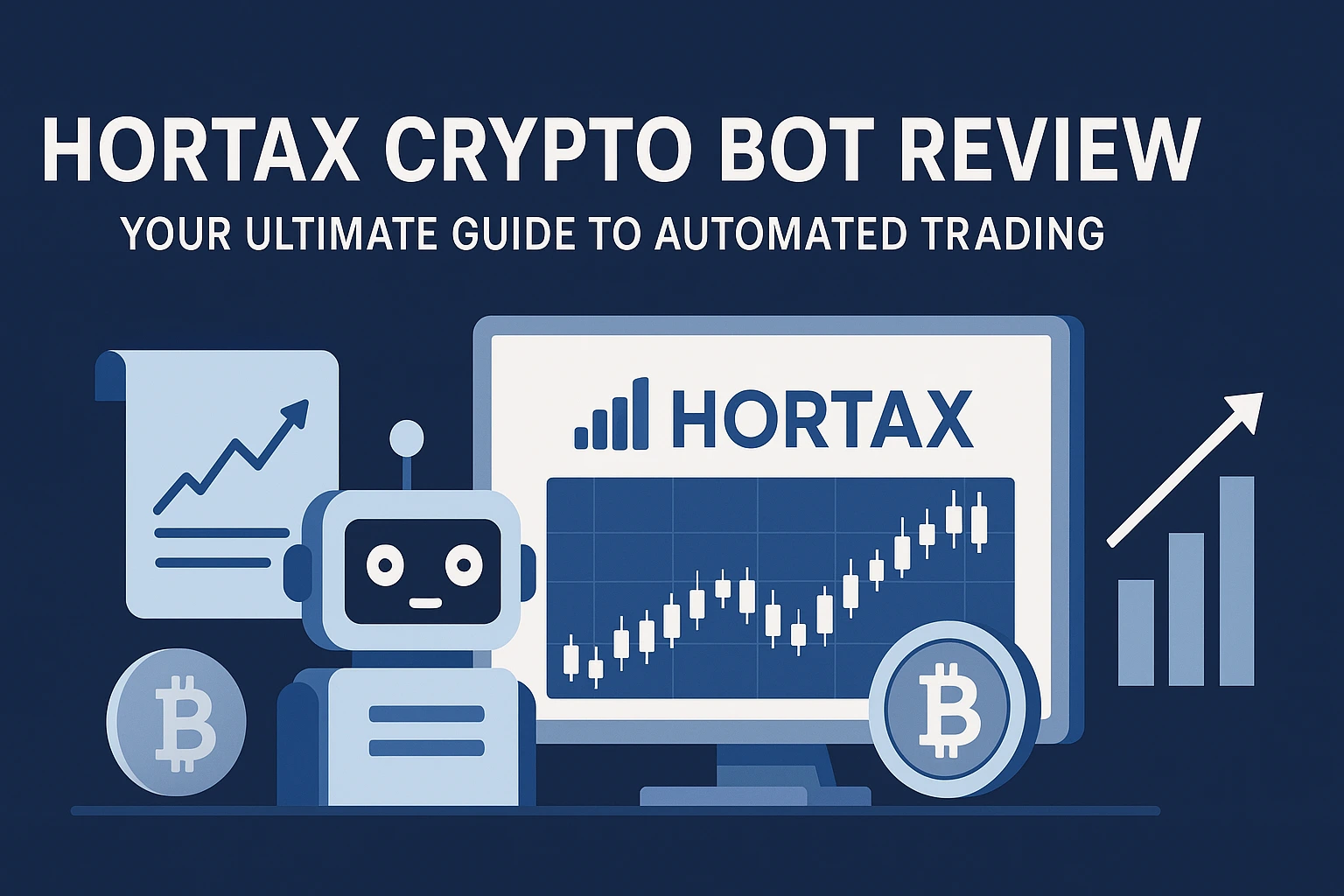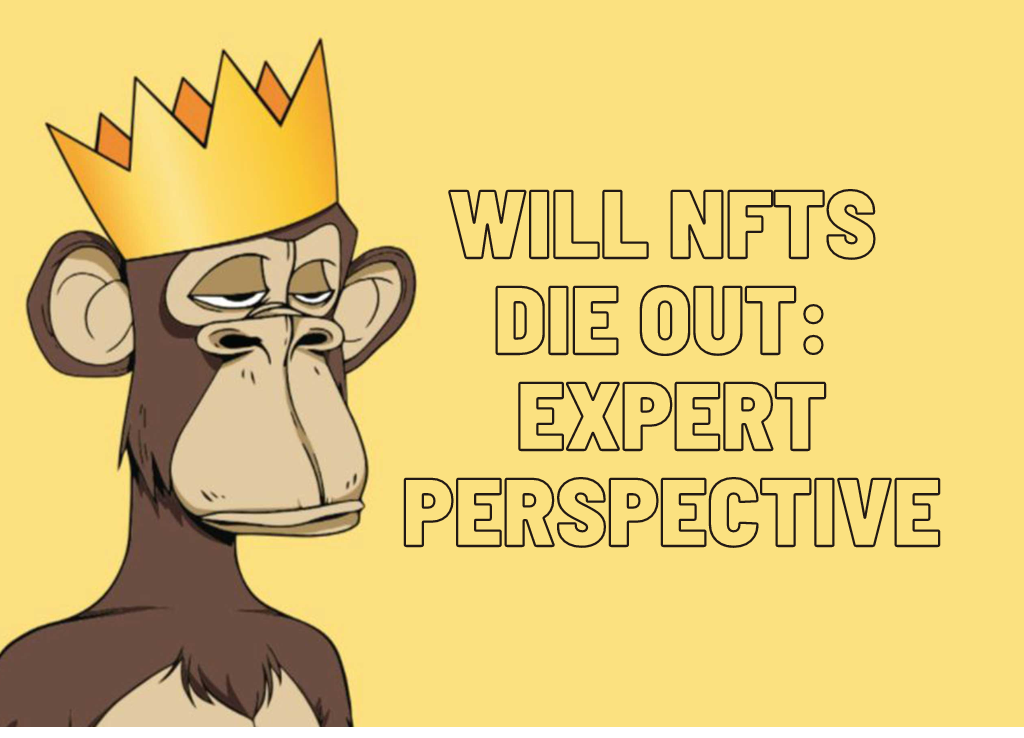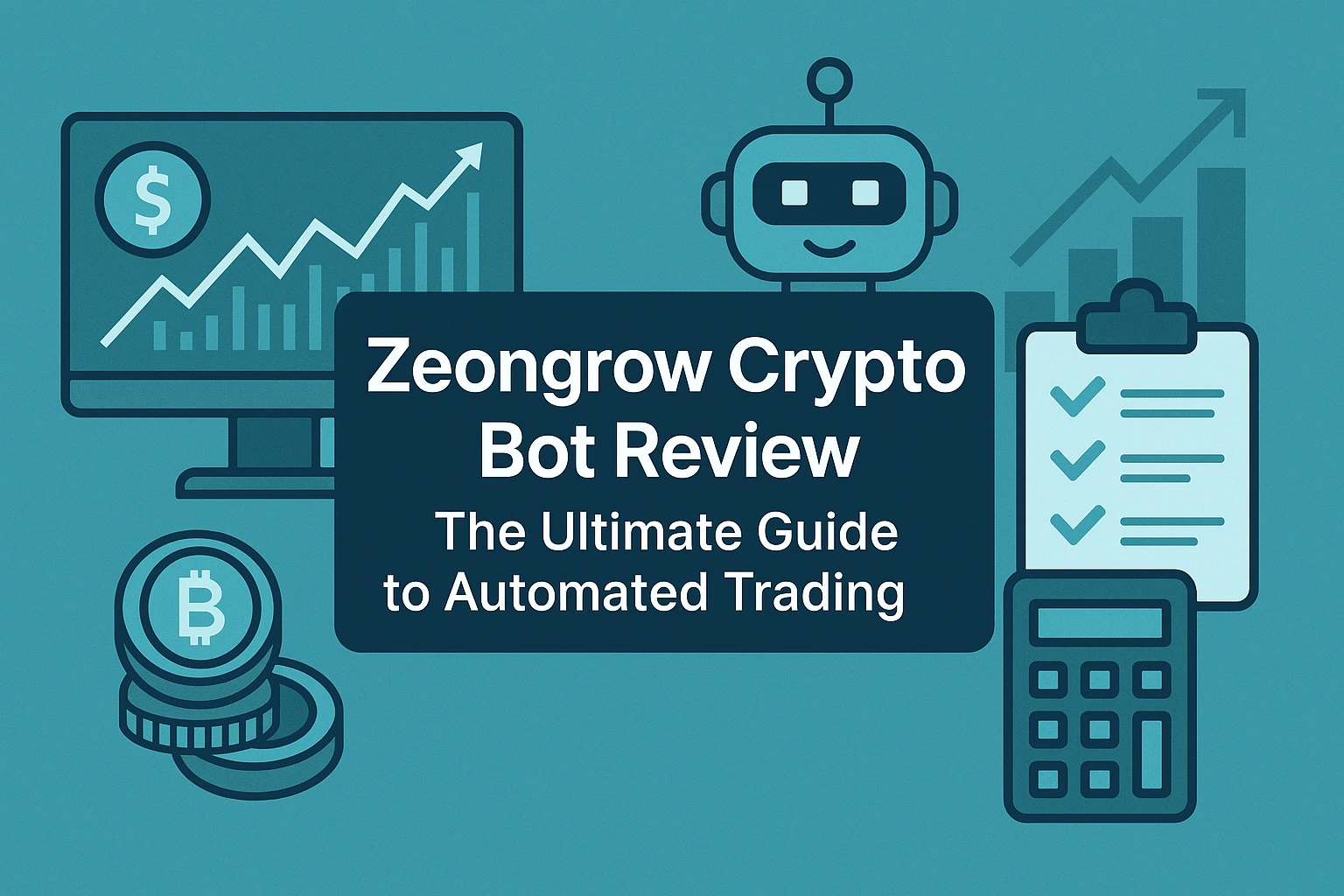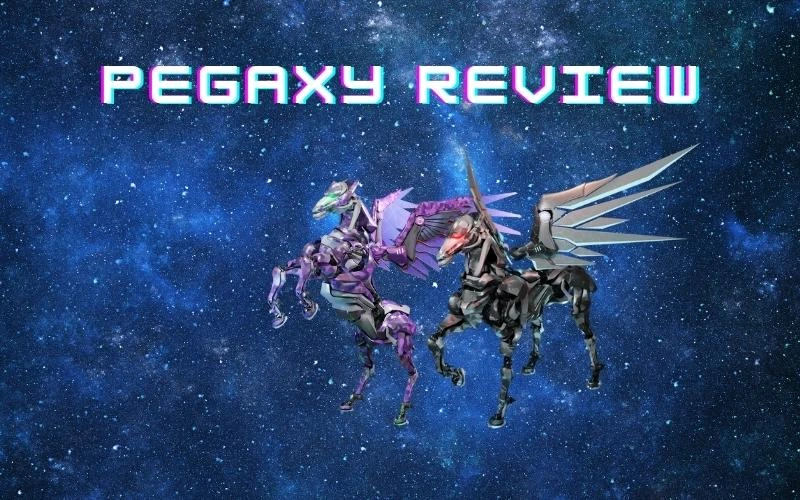The NFT market has matured significantly since the initial boom in 2021, but one thing remains constant: quality NFT projects continue to capture attention and generate substantial value. After five years in the crypto and NFT space, I’ve witnessed countless projects rise and fall, with the common denominator for success being thoughtful creation, strategic planning, and technical execution.
Understanding how to generate NFT art efficiently is no longer optional for artists looking to break into Web3. Whether you’re aiming to craft a single masterpiece or wondering how to generate NFT collections with thousands of unique items, this comprehensive guide will walk you through every essential step.
The Evolution of NFT Creation: Then vs. Now
When NFTs first exploded in popularity, the barrier to entry was high. Artists needed programming knowledge or expensive developer assistance to mint their work. Today, the landscape has dramatically changed:
- Automated tools have simplified the creation process
- AI-powered platforms enable even non-artists to generate compelling work
- Layer-2 solutions have reduced gas costs for minting
- No-code platforms allow anyone to create and deploy collections
Before diving into specific methods, let’s clarify the key approaches to generating NFT art:
| Method | Technical Skill Required | Cost | Best For |
|---|---|---|---|
| Manual Creation | Low-Medium | Low | One-off artistic pieces |
| Generative Algorithms | Medium-High | Medium | Traits-based collections |
| AI-Assisted Tools | Low | Low-Medium | Unique conceptual pieces |
| 3D Modeling | Medium-High | Medium-High | Metaverse-ready assets |
| No-Code Platforms | Low | Medium | Quick deployment |
Now, let’s explore the most effective ways to create stunning NFTs in today’s market.
Essential Tools to Generate NFT Art
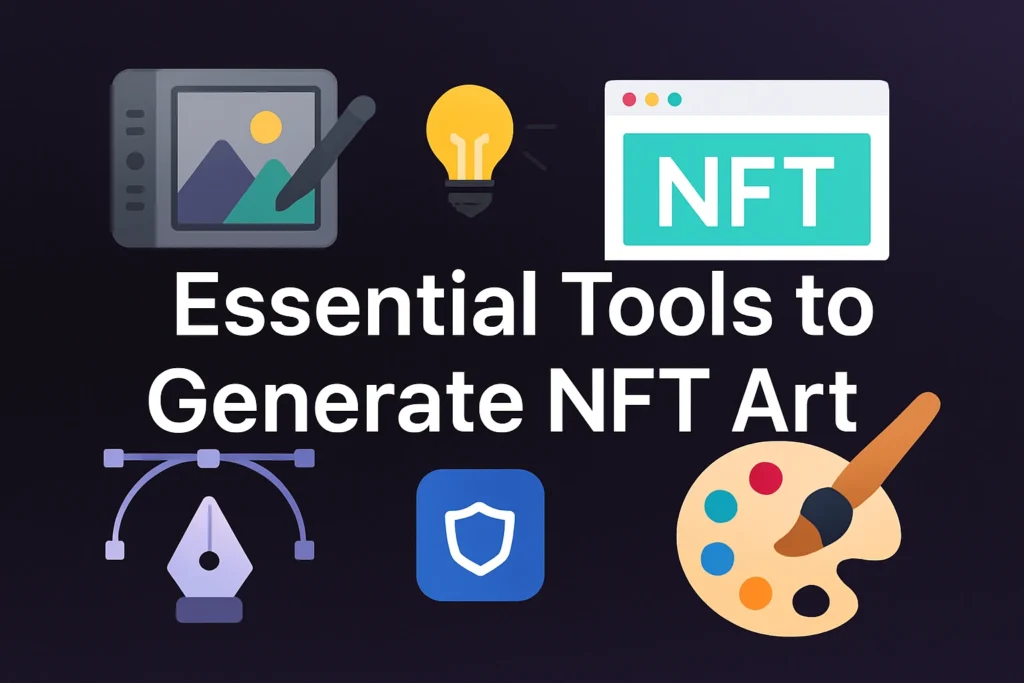
Digital Creation Software
Before exploring automation, let’s cover the foundational tools for creating NFT artwork:
Professional Options
- Adobe Photoshop: Industry standard for 2D art manipulation
- Illustrator: Vector-based creation for scalable artwork
- Blender: Open-source 3D modeling (essential if you’re looking into how to generate 3D NFT collections)
- Cinema 4D: Premium 3D modeling and animation
Budget-Friendly Alternatives
- GIMP: Free Photoshop alternative
- Krita: Excellent for digital painting
- Inkscape: Open-source vector graphics
- Tinkercad: Beginner-friendly 3D modeling
Pro Tip: When creating NFT art in any program, work at a higher resolution than you plan to export. This gives you flexibility for future use cases and ensures your art remains crisp across platforms.
AI Tools to Auto Generate NFT Art
If you’re wondering how to auto generate NFT art without extensive artistic skills, AI tools have revolutionized this space:
Text-to-Image Generators
- Midjourney: Produces highly aesthetic, stylized images from text prompts
- DALL-E 3: Creates photorealistic and artistic images with incredible detail
- Stable Diffusion: Open-source alternative with powerful customization options
Style Transfer and Enhancement
- Artbreeder: Combines and evolves images through genetic algorithms
- RunwayML: Offers various creative AI tools including style transfer
- NightCafe Creator: User-friendly interface with multiple AI models
Expert Insight: When using AI to generate images for NFT projects, focus on creating unique prompting systems. The value often lies not in a single image but in creating a coherent collection with a distinctive style that stands out from generic AI art.
How to Generate NFT Collection: Step-by-Step Guide
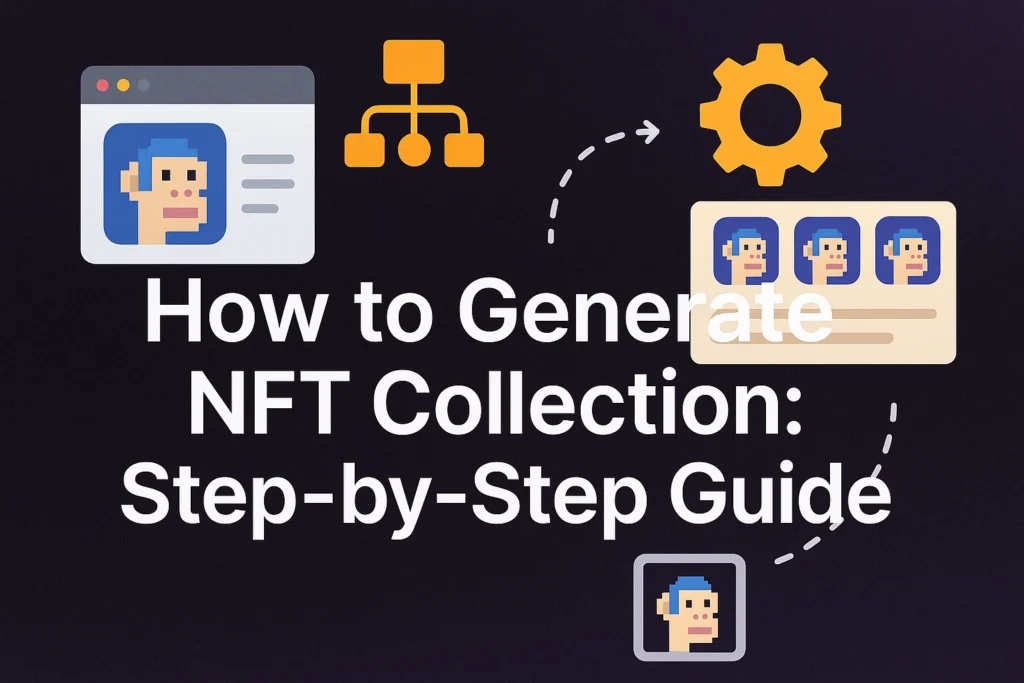
Creating a cohesive collection rather than individual pieces requires a different approach. Here’s my battle-tested process for how to generate NFT collections that stand out:
1. Conceptualization and Planning
Before touching any creation tool, develop a solid concept:
- Theme: Choose a unifying concept or narrative
- Trait Structure: Determine categories (background, character, accessories, etc.)
- Rarity System: Plan how rarities will be distributed
- Collection Size: Decide how many unique NFTs to create (typically 1,000-10,000)
Planning Document Example:
Collection: Quantum Explorers
Total Items: 5,000
Traits:
- Background (5 common, 3 uncommon, 2 rare)
- Character Base (3 common, 2 uncommon, 1 rare)
- Outfit (8 common, 5 uncommon, 3 rare)
- Headgear (6 common, 4 uncommon, 2 rare, 1 legendary)
- Accessories (10 common, 6 uncommon, 4 rare, 2 legendary)
- Special Effects (4 uncommon, 3 rare, 1 legendary)
2. Creating Base Assets
Once your concept is solid, begin creating the individual trait components:
- Maintain Consistent Dimensions: All trait layers must have identical canvas sizes
- Use Transparent Backgrounds: Save components as PNG with transparency
- Organize in Folders: Keep traits categorized for easy access
- Naming Convention: Establish a consistent naming system (e.g.,
Background_Blue_Common.png)
3. Using Generators to Auto Generate Collection
Several tools can help you auto generate NFT collections from your asset layers:
On-Chain Generators
- Art Blocks: For fully on-chain generative art (advanced)
- fx(hash): Tezos-based generative art platform
Layer-Based Generators
- HashLips Art Engine: Open-source JavaScript tool for layer-based generation
- NFT Art Generator: User-friendly web interface for trait combination
- Bueno: All-in-one NFT creation platform with powerful generation tools
No-Code Solutions
- NFTPort: API-based generation and minting
- GoArt: Simplified layer-based generation
- LazyMint: Generation with built-in marketplace integration
4. Testing and Refining
Before finalizing your collection:
- Generate Test Batch: Create a small sample (50-100 items)
- Check for Undesirable Combinations: Look for trait conflicts
- Adjust Rarity Settings: Tweak percentages based on test results
- Verify Uniqueness: Ensure no duplicates exist
- Optimize File Sizes: Balance quality and blockchain storage costs
How to Generate 3D NFT Collection
Creating 3D NFTs requires specialized knowledge but offers unique opportunities, especially for metaverse and gaming applications. Here’s how to approach 3D NFT collection generation:
1. Choosing Your 3D Creation Path
Based on your technical skills, choose one approach:
For Beginners
- Use template-based tools like Ready Player Me or VRM Models
- Explore Voxel Art with user-friendly tools like MagicaVoxel
- Consider 3D Scanning real objects using smartphone apps
For Intermediate Creators
- Learn Blender fundamentals for custom 3D modeling
- Use ZBrush for detailed character sculpting
- Explore procedural generation with Houdini Indie
For Advanced Artists
- Create rigged characters with Maya or 3ds Max
- Use Substance Painter for professional texturing
- Implement procedural variations with scripting
2. Essential Steps for 3D NFT Collection Creation
- Create Base Models: Develop your primary 3D assets
- Set Up Material Variations: Prepare different textures and materials
- Implement Procedural Elements: Use algorithms for variation
- Optimize for Web Display: Reduce polygon count and texture sizes
- Render in Consistent Style: Maintain visual coherence across collection
- Export in Web-Compatible Formats: Use glTF or similar formats
3. Specialized Platforms for 3D NFT Generation
- Anything World: AI-assisted 3D model generation
- Threedium: No-code 3D NFT creator
- Voxels: Voxel-based creation platform
- OnCyber: 3D gallery and creation tools
- Manifold Studio: Advanced 3D NFT creation and minting
Expert Tip: When deciding how to generate 3D NFT collection items, prioritize metaverse compatibility. Ensure your 3D assets work in environments like The Sandbox, Decentraland, or Spatial to maximize utility and value.
How to Generate Images for NFT Using AI
The rise of AI art tools has made it possible for non-artists to create stunning visuals. Here’s my workflow for generating images for NFT projects using AI:
1. Selecting the Right AI Tool
Different AI models excel at different styles:
- Midjourney: Best for stylized, artistic, and imaginative concepts
- DALL-E: Excels at photorealistic and commercial-quality images
- Stable Diffusion: Offers maximum customization and local running options
- Leonardo.AI: Specialized in game art and character design
2. Crafting Effective Prompts
The secret to exceptional AI-generated NFT art lies in prompt engineering:
Basic Prompt Structure
[Subject] + [Action] + [Style] + [Artist Reference] + [Technical Parameters]
Example Prompt
A cybernetic samurai warrior standing on a neon-lit rooftop, intricate detailed armor, volumetric lighting, in the style of Yoshitaka Amano, 8k resolution, sharp focus
Advanced Prompting Techniques
- Use weight parameters (
::1.5) to emphasize certain elements - Include negative prompts to exclude unwanted elements
- Chain multiple AI generations, using outputs as inputs for refinement
- Develop consistent seed numbers for stylistic cohesion
3. Batch Processing for Collections
To efficiently auto generate NFT art in volume:
- Create Prompt Templates: Develop a base prompt structure
- Use Variables: Insert changing elements for variation
- Implement Automation: Use APIs or scripting for batch generation
- Post-Process for Consistency: Apply filters or adjustments to unify style
Case Study: For my “Quantum Explorers” collection, I used a Python script with the Stable Diffusion API to generate 250 unique base characters, then applied procedural variations to traits, resulting in 5,000 unique combinations while maintaining visual cohesion.
Minting Your Generated NFTs
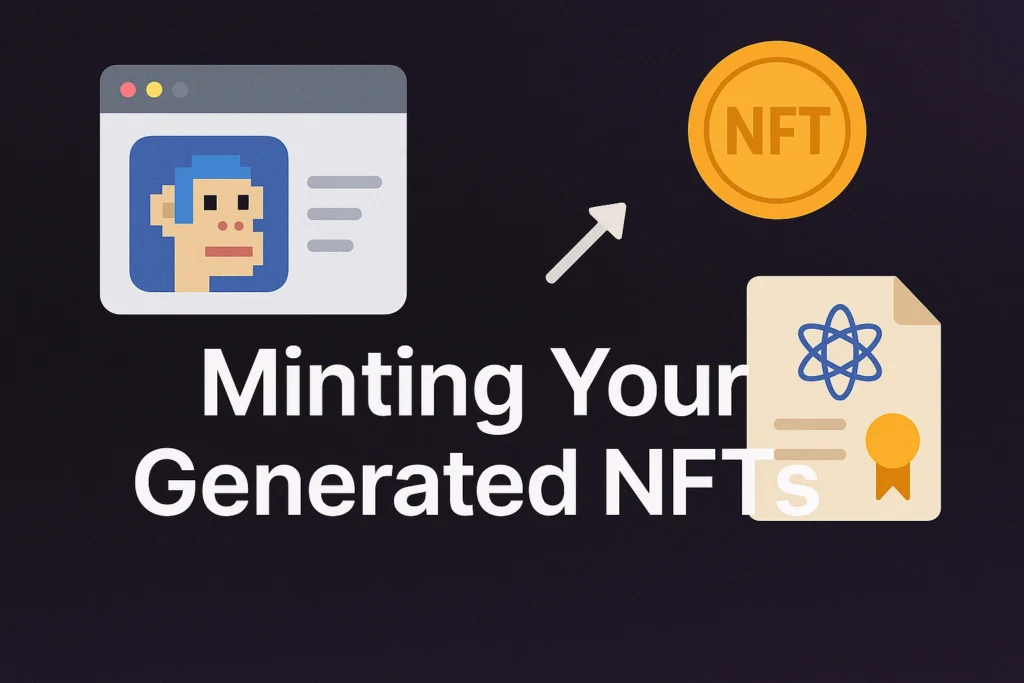
Once you’ve created your artwork, the next step is getting it on-chain:
1. Choosing the Right Blockchain
| Blockchain | Pros | Cons | Best For |
|---|---|---|---|
| Ethereum | Highest liquidity, prestige | High gas fees | High-value collections |
| Solana | Low fees, fast transactions | Less established | Large collections |
| Polygon | Ethereum compatibility, low fees | Secondary market limitations | Budget-conscious creators |
| Tezos | Energy efficiency, art focus | Smaller market | Environmentally concerned artists |
2. Marketplace vs. Custom Contract
Two primary approaches to minting:
Marketplace Minting
- OpenSea: Simplified creation with lazy minting
- Foundation: Curated platform for high-quality art
- Rarible: User-friendly with custom royalties
- SuperRare: Highly selective for premium 1/1 art
Custom Smart Contract
- Manifold: Creator-focused custom contracts
- thirdweb: Developer tools for custom drops
- nft-maker: Simplified custom contract deployment
- Zora: Open-source creator toolkit
3. Technical Considerations for Minting
- Metadata Standards: Follow proper metadata schema (ERC-721 or ERC-1155)
- Storage Solutions: Choose between IPFS, Arweave, or centralized options
- Gas Optimization: Consider batch minting to reduce fees
- Royalty Settings: Implement on-chain royalties where supported
Advanced Tips for Successful NFT Generation
After years of creating and advising NFT projects, here are my top insights:
Creating Genuine Utility
The most successful collections offer more than just artwork:
- Access Tokens: Provide exclusive community benefits
- Interactive Elements: Develop evolving or interactive features
- Physical Redemption: Connect digital assets to physical items
- Gamification: Implement collection mechanics or progression systems
Community Building Alongside Creation
Start building community during the creation process:
- Share Behind-the-Scenes: Document your creation journey
- Involve Future Owners: Allow community input on traits or themes
- Create Educational Content: Teach others about your methods
- Establish Creator Identity: Build your brand alongside your collection
Technical Differentiation
Stand out with technical innovation:
- On-Chain Rendering: Explore fully on-chain generation
- Dynamic NFTs: Implement state changes based on external data
- Composable Elements: Create assets that work with other projects
- Cross-Platform Compatibility: Ensure usefulness across multiple metaverses
Conclusion: Your Path to NFT Creation Success
Generating NFTs has evolved from a technical challenge to an accessible creative process. Whether you choose to auto generate NFT collections using AI tools, develop 3D NFT collections for the metaverse, or craft handmade digital art, the key factors for success remain consistent:
- Artistic Vision: Create something meaningful and distinctive
- Technical Execution: Ensure high-quality output and smooth minting
- Community Connection: Build relationships around your creation
- Sustained Development: View your project as an ongoing venture
The tools and techniques covered in this guide provide multiple entry points based on your skills and resources. The democratization of NFT creation tools means the barrier is no longer technical—it’s creative. The question isn’t whether you can generate NFTs, but whether you can generate NFTs that matter.
As the space continues to evolve, stay focused on quality, utility, and innovation. The most successful creators I’ve witnessed over my five years in this space aren’t necessarily the most technically skilled, but those who bring unique vision and consistent execution to the table.
FAQ: Common Questions About NFT Generation
How much does it cost to generate an NFT collection?
The cost varies widely depending on your approach:
- DIY with Free Tools: Primarily time investment plus minting costs ($50-5,000)
- Mid-Range with Premium Tools: $500-5,000 plus minting
- Professional Development: $5,000-50,000+ for custom development
- Minting Costs: Anywhere from less than $1 per NFT (Solana) to $50+ per NFT (Ethereum)
How long does it take to create a 10,000 NFT collection?
With proper planning:
- Asset Creation: 2-4 weeks for designing all traits
- Generation Process: 1-3 days for technical combination
- Testing & Refinement: 1-2 weeks
- Smart Contract & Deployment: 1-2 weeks
- Total Timeline: 1-3 months from concept to launch
Is AI-generated art really valuable as NFTs?
Yes, but with important caveats:
- Unique Prompting: Generic AI art has limited value
- Conceptual Depth: The idea behind the collection matters more than the tool
- Technical Integration: Combining AI with other elements adds distinctiveness
- Artistic Direction: Human curation and direction remain essential
How do I ensure my generated collection is unique?
Take these steps:
- Research Existing Projects: Avoid similarity to established collections
- Develop Original Traits: Create assets from scratch rather than modifying templates
- Implement Collision Detection: Use software to catch and prevent duplicates
- Add Signature Elements: Include distinctive visual motifs unique to your collection
Can I generate NFTs without coding knowledge?
Absolutely:
- Use no-code platforms like NFT Art Generator or GoArt
- Leverage marketplace tools on OpenSea, Foundation, or similar platforms
- Consider collaboration with technical partners if needed
- Start with smaller collections to learn the process

I am Yuriko, a full stack blockchain developer. I got into programming in high school, and have been hooked ever since. I love pushing the boundaries of what is possible with code, and exploring new ways to solve problems.
I am 35 years old, and started my career as a web developer. I soon transitioned into blockchain development, and have never looked back. I am excited about the potential of blockchain technology to change the world, and am committed to doing my part to make that happen.

